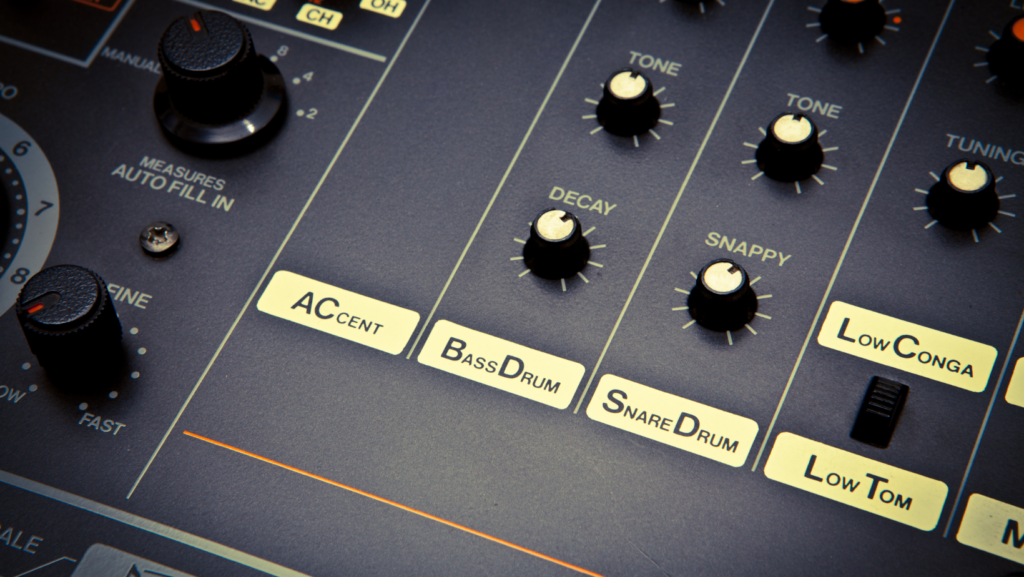In the symphony of education, technology’s role is growing more prominent, especially in the realm of music.
Stay tuned as we explore the harmonious blend of music and technology in education.
Technology in Music Education
Milestones in Music Technology
 The rise of the internet in the 1990s brought a new milestone in terms of technology in music education. With vast repositories of information and learning materials available online, students gained direct access to a world of music at their fingertips. In the early 2000s, software applications like GarageBand and Pro Tools allowed students to compose, record, and edit music with ease and precision.
The rise of the internet in the 1990s brought a new milestone in terms of technology in music education. With vast repositories of information and learning materials available online, students gained direct access to a world of music at their fingertips. In the early 2000s, software applications like GarageBand and Pro Tools allowed students to compose, record, and edit music with ease and precision.
Moving into the digital age, the 2010s introduced a surge in music apps geared towards education. Mobile platforms presented an array of educational music applications, integrating learning into our daily routine. Interactive apps gave individuals the freedom to learn and practice at their own pace, and within the comfort of their own homes.
Impact of Digital Tools on Music Learning
In line with the historical development of technology in music education has been transformational, digital tools have created a significant progression in teaching and learning music.
Benefits for Students
Digital tools maximize the music learning experience, making it more interactive and diversified. Primarily, they enhance accessibility, as students lack limitations typically associated with traditional music training. For instance, music lessons are offered online, allowing anyone, anywhere to learn according to their schedule.
Furthermore, technology fosters independence in learners. Not only are they consuming knowledge, they quickly transform into creators, mastering composition and production basics with tools like GarageBand. By controlling their learning pace and using tools tailored to their preferences, students personalize their music learning path.
Ergonomically designed digital instruments also contribute immensely, keeping students physically and psychologically comfortable during practice. For example, lighter electronic violins exemplify this advantage, causing less strain on a player’s neck and shoulder.
Challenges for Educators
 Despite the vast advantages of digital tools, they pose several challenges for educators. Most significantly, emerging technologies compel instructors to continually upgrade their technical know-how, often requiring additional resources and time.
Despite the vast advantages of digital tools, they pose several challenges for educators. Most significantly, emerging technologies compel instructors to continually upgrade their technical know-how, often requiring additional resources and time.
Further, access equity issues emerge with digital tools. Not all students possess the same technology access or proficiency, creating disparities in learning experiences. As not everyone owns high-priced instruments or software, educators often face difficulties ensuring a uniform learning standard.
Moreover, with the majority of tools and tutorials available, a risk exists that poor quality resources, with unreliable information, can find their way into the hands of budding musicians. Thus, educators engage an increasing role in curating and monitoring the digital learning materials used by students.
Innovative Technologies in Music Education
Apps and Software
 In today’s tech-focused world, numerous apps and software accelerate music education. Consider apps like Synthesia, Yousician, and Simply Piano. These transform traditional instruction, offering interactive lessons for learners at various proficiency levels. Comprehensive software like Avid Sibelius, MuseScore, and Finale present sophisticated platforms for notation and composition. These apps and software serve as vital resources, extending convenience and flexibility to both teachers and students in music education.
In today’s tech-focused world, numerous apps and software accelerate music education. Consider apps like Synthesia, Yousician, and Simply Piano. These transform traditional instruction, offering interactive lessons for learners at various proficiency levels. Comprehensive software like Avid Sibelius, MuseScore, and Finale present sophisticated platforms for notation and composition. These apps and software serve as vital resources, extending convenience and flexibility to both teachers and students in music education.
Virtual Reality and AI
Beyond apps and software, other innovative solutions active in transforming music education are virtual reality (VR) and artificial intelligence (AI). VR provides immersive experiences, allowing learners to perform on virtual stages or explore historical music venues. An example is SoundStage, a VR application transforming a room into a playground for musicians.
Technology in music education is undeniable. From historical milestones like the phonograph to modern digital tools such as GarageBand, it’s reshaped teaching methods and the learning experience. While educators grapple with the challenges of evolving tech and access equity, the benefits are clear. Personalized learning paths, enhanced accessibility, and boosted creativity are just a few of the advantages. Apps like Synthesia, Yousician, and Simply Piano, along with software like Avid Sibelius and MuseScore, are leading the charge in this tech-driven revolution. The potential of VR and AI is also emerging, promising immersive experiences and innovative music pieces.

